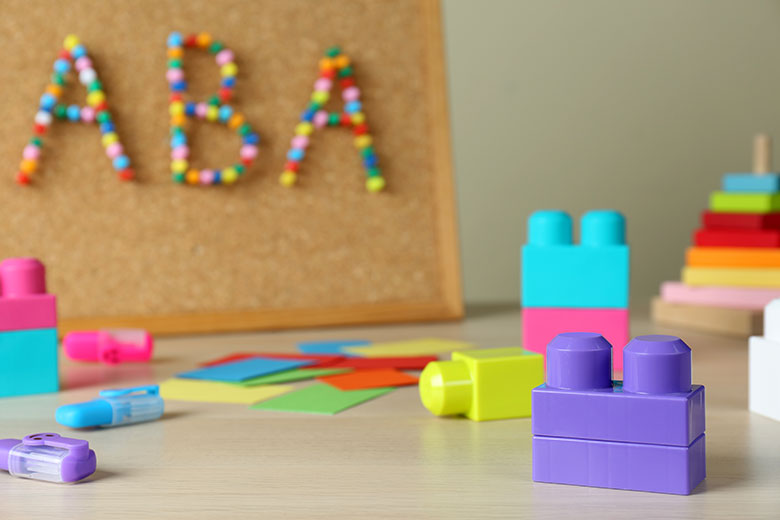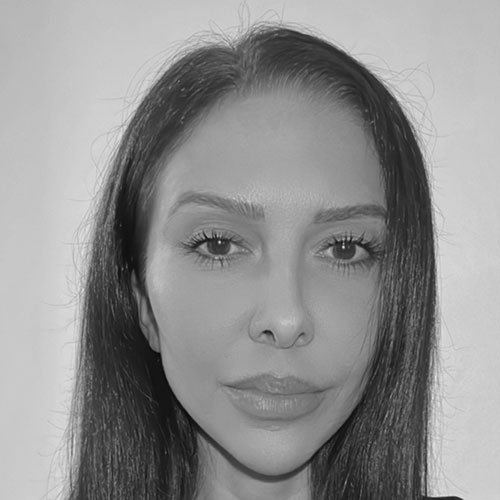Applied Behavioural Analysis (ABA) is an evidence-based therapy that is tailored to a child’s specific needs. It improves socially significant behaviours such as language and communication, attention, memory and academics by breaking down each task and teaching it in smaller steps. Deniz Mehmet-Adnan MSc, BCBA is a board-certified behaviour analyst with over 13 years experience in the field. Education UAE spoke to her about her experience, process and success with the therapy.
EdUAE: What is your approach to Applied Behavioural Analysis therapy and how do you tailor it to meet the needs of each individual client?
Deniz Mehmet-Adnan: A comprehensive assessment is conducted to gather information about the client’s strengths, challenges, and specific goals. Based on the assessment results, an individualised treatment plan is created. This plan outlines specific goals and objectives for the client’s behaviour change. ABA therapy employs a functional behaviour analysis approach to identify the antecedents (triggers) and consequences that influence the target behaviours. By analysing the function of behaviours, we can determine why certain behaviours occur and develop interventions accordingly.
The therapy relies on data collection to track progress and make informed decisions. Data is collected systematically to measure the frequency, duration, and intensity of targeted behaviours. We utilise a range of evidence-based intervention strategies tailored to the individual client’s needs. These strategies may include positive reinforcement, prompting, shaping, modelling, and other behaviour change techniques. If necessary, we make adjustments to the treatment plan, strategies, or goals based on the client’s progress, changing needs, and new information.
A critical aspect of ABA therapy is promoting generalisation of skills. we work to help clients transfer and apply their newly acquired skills in various settings, with different people, and across different contexts. Maintenance strategies are also implemented to ensure that progress is sustained over time.

EdUAE: Can you provide an example of a success story from your therapy practice, showcasing a child’s positive outcome and growth?
DM: I have worked with several children diagnosed with language delay, developmental delay and Autism Spectrum Disorder (ASD) who have made transformative progress. I started working with one little girl at the age of 2. When she first started therapy, she faced significant challenges in social interaction, communication, and managing her emotions. Her parents were concerned about her limited verbal skills and difficulty engaging with others.
With a tailored Applied Behaviour Analysis (ABA) therapy approach, an individualised treatment plan was devised to address her specific needs and goals. The therapy focused on building her communication skills, social interactions, and emotional regulation.
Through consistent intervention, positive reinforcement, and structured learning opportunities, this little girl made remarkable progress. She began to develop functional communication skills using both verbal and non-verbal methods. She learned to use picture exchange systems, sign language, and eventually started using short sentences to express her needs and preferences.
Additionally, we implemented strategies to enhance her social skills. we worked on joint attention, perspective-taking, and turn-taking activities to promote her engagement with peers and foster meaningful social connections. With practice and support, she became more comfortable in social settings and started initiating interactions with others.
Furthermore, the therapy focused on helping this little girl to manage her emotions and develop appropriate coping strategies. Techniques such as visual schedules and social stories were utilised to support her emotional regulation. She learned to identify and express her feelings in a more adaptive manner, leading to a decrease in challenging behaviours and an increase in her overall emotional well-being.
As she progressed in therapy, her parents noticed significant improvements in her quality of life. They saw her initiate conversations with family members, make friends at school, and participate in activities that she previously found challenging. Her increased communication skills and social abilities not only enriched her relationships but also contributed to her academic progress and overall confidence.
This success story exemplifies the positive outcomes that can be achieved through tailored ABA therapy. It highlights the transformative impact of early intervention, personalised treatment plans, and the dedication of therapists, parents, and caregivers in supporting a child’s growth and development.
EdUAE: If a parent carries out the therapy, do they have access to help and advice as and when needed?
DM: Yes, parents who carry out therapy for their child have regular access to help and advice as and when it is needed. Parental involvement is highly valued and encouraged in ABA therapy. We understand the importance of supporting parents in their role as primary caregivers and therapists for their child. We recognise that parents may have questions, concerns, or require guidance throughout the therapy process, therefore, therapy programmes offer various forms of support to parents, including regular communication, parent training, resources and materials and general ongoing support.
It’s important for parents to proactively communicate with their child’s therapy providers and express any concerns or questions they may have. This ensures that we can provide the necessary help and guidance to support the parents in implementing therapy effectively and achieving positive outcomes for their child.”

EdUAE: How do you create a safe and trusting therapeutic relationship with children?
DM: Establishing a safe and trusting therapeutic relationship with children is a fundamental aspect of my practice. Building this relationship helps create an environment where children feel comfortable, understood, and supported, enabling them to actively engage in therapy.
The key approaches I use to foster a safe and trusting therapeutic relationship are building rapport, clear communication, establishing predictability and structure, collaborative goal setting and consistency and reliability.
EdUAE: Do you feel it is important that ‘inclusion teams’ in schools should train in the therapeutic arts or, ideally, have a qualified and experienced therapist on the team?
DM: Yes, for a number of reasons I believe it is important for inclusion teams in schools to receive training in the therapeutic arts or ideally have a qualified and experienced therapist on the team. In doing so they can achieve comprehensive support, skill development, collaboration with therapeutic professionals, individualised support for students and early intervention and prevention.
Ultimately, the goal is to create inclusive and supportive environments where students with diverse needs can thrive academically, socially, and emotionally. By investing in training and expertise in therapeutic arts, inclusion teams can contribute significantly to achieving this goal.
EdUAE: How do you incorporate cultural or diversity considerations into your therapy practice?
DM: Recognising and honouring cultural diversity is an integral part of my therapy practice.
During the initial assessment process, I take the time to understand the cultural background, values, beliefs, and unique experiences of each client and their family. This cultural understanding helps inform the assessment process and ensures that the goals and interventions are sensitive to their cultural context.
I create a safe space where clients feel comfortable expressing their cultural identity and discussing how it impacts their well-being and therapy goals. By recognising and integrating cultural values, I can provide more personalised and meaningful support.
I adapt therapeutic interventions to be culturally appropriate and relevant to the client’s background. This may involve modifying therapeutic techniques, materials, or activities to align with cultural values, language preferences, or communication styles.
Cultural competence is an ongoing process, and it is important to remain open to feedback, actively seek knowledge, and adapt one’s approach as needed to provide the best possible care to clients from diverse backgrounds.
EdUAE: Are there any specific resources or additional support services that you typically recommend to clients outside of therapy sessions? I often recommend relevant books, articles, or workbooks that align with the client’s therapy goals. These resources can offer valuable insights, practical strategies, and further education on the topics we address in therapy.
If a client’s needs extend beyond the scope of my practice or require specialised expertise, I may provide referrals to other professionals in the community. This could include speech & language therapists, nutritionists, occupational therapists, or other relevant healthcare providers who can offer targeted support.
EdUAE: How do you assess progress and determine when therapy goals have been achieved?
DM: From the outset, I collaborate with clients to establish clear and measurable therapy goals. By involving clients in the goal-setting process, we create a shared understanding of what success looks like and the specific areas we aim to address in therapy. These goals serve as a foundation for assessing progress throughout the therapeutic journey.
I regularly engage in dialogue with clients to gather their feedback on the therapy process. This feedback provides valuable insights into the client’s perspective and helps inform the ongoing therapy approach. In addition to client feedback, I use objective measures and assessments to evaluate progress.
At the outset of therapy, we establish specific criteria that indicate when therapy goals have been achieved. I regularly refer back to these criteria to assess progress and determine goal achievement, as well as evolving needs. This helps maintain focus and adapt the treatment plan as necessary.
As clients make significant progress and approach their therapy goals, we discuss and plan for a gradual transition or termination of therapy. This transition phase focuses on consolidation of skills, relapse prevention, and ensuring the client feels confident and empowered to apply what they have learned independently.

Deniz Mehmet-Adnan, MSc, BCBA is a board-certified behaviour analyst, autism specialist and consultant to schools in the UK, USA and Middle East. She has over 13 years of experience working with young people from 18 months up to 20 years old, who display traits such as challenging behaviour, development and speech delay and a lack of social skills. She specialises in training parents and school staff to better understand their child/student and to equip them with comprehensive knowledge to fully support them in the home, school, and community.












